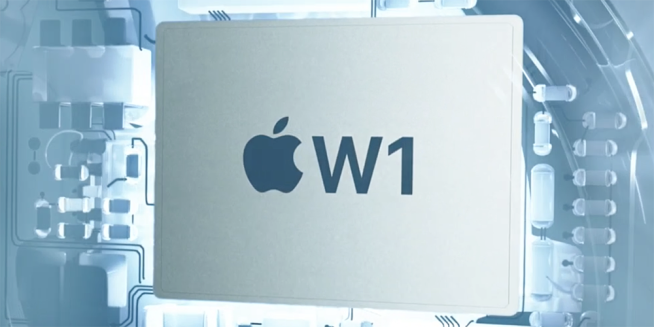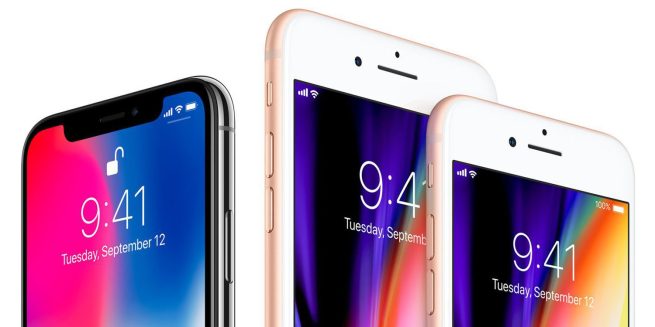News - 20180719 - Bluetooth 5.0 explained: A glimpse into the future of wireless Apple products
Something that has gone under the radar with the latest iPhone revisions, however, is the inclusion of Bluetooth 5.0, a very important step into creating a more streamlined wireless future. The technology is also included in the 2018 revision of the MacBook Pro with Touch Bar and the HomePod.
So let’s take a look at Bluetooth 5.0. What’s new, why it’s important, and what could users expect in future OS releases from Apple?
What’s new and why it’s important?
There’s a few important pillars of Bluetooth 5.0: Speed, range, throughput, and mesh.
If you recall back to the original watchOS 1.0 days, where everything was being transferred from the phone onto the Apple Watch, then you’d remember how painfully slow of a process that was. Apps and Siri took upwards of 30 seconds to load. At the time, Apple Watch was transferring everything over Bluetooth. With later revisions such as Apple Watch Series 3, the Watch transfers data over Bluetooth, but most apps run independently on the Watch itself, with the aid of both Wi-Fi and Cellular to load data in quicker.
However, if that original watchOS method of apps was still being used today, Bluetooth 5.0 would be super beneficial. With the latest version of Bluetooth 4, version 4.2, the throughput is 1Mbps, but with Bluetooth 5.0, that is doubled with speeds up to 2Mbps. This is great for things such as smartwatches, but it’s also a welcome addition for audio as Bluetooth 5.0 will allow for higher bitrate streaming.

While Apple likely won’t make use of higher bitrate streaming for now (Apple Music already streams at 256Kbps and iOS only supports AAC which has a max bitrate of 256Kbps anyways), Bluetooth 5.0 lays the groundwork for potentially lossless streaming over a wireless connection.
What’s more likely to happen is Apple will allow multiple Bluetooth audio devices to hook into a single iOS device. As we’ve seen with countless other Android handsets that include Bluetooth 5.0, Apple could add support for multi-audio streaming over Bluetooth. Since Apple Music and most other audio is around 256 to 320Kbps, Apple could enable the ability to connect to 2 or even 3 separate Bluetooth devices. Of course, there needs to be an upper limit as other Apple services such as AirDrop and Apple Watch also relies on that bandwidth.
Some Bluetooth headphones, for example, already allow you to connect to two devices at once (granted, music can only be playing from one device).

Arguably the more substantial enhancement is in the range department. With Bluetooth 5.0, the wireless technology is capable of 4x the range, going from 200 feet (60 meters) to 800 feet (240 meters). Range is one of those things users won’t typically notice until audio either starts cutting out or completely stops working because the device is out of range. Of course, just like any other wireless tech, obstructions such as walls will play a role.
Mesh has been making its rounds in the Wi-Fi universe, and Bluetooth 5.0 adds support for mesh networking as well. While it doesn’t sound significant, mesh will help with a lot of IoT/smart devices. HomeKit doesn’t support it yet, and smart devices are slow to adopt, so this will take a while, but should improve both range and reliability of smart devices that communicate over Bluetooth. HomePod already supports Bluetooth 5.0, so it’s only a matter of time.

And lastly, speed. While Apple is typically really good with keeping audio in sync over wireless tech, apps can sometimes act wonky. This is because of lag or latency. With any wireless technology, latency is an issue. Especially with video or gaming, latency plays a key role into your general experience. While there aren’t any hard numbers on this, the Bluetooth marketing material from the Bluetooth Standards Organization says you’ll get up to two times the speed with Bluetooth 5.0. Again, that’s fairly vague so we’re not sure if that means improving latency.
Theoretically, however, this could mean going from 90ms lag with AAC (what Apple uses) down to around 40-50ms lag. That’d be a pretty respectable latency as most Wi-Fi networks fall between 20-50ms lag.
What does this mean for Apple users?
Right now, nothing. As we mentioned earlier, Bluetooth 5.0 is currently supported on iPhone 8, iPhone 8 Plus, iPhone X, HomePod and the 2018 MacBook Pro with Touch Bar. However, in the future, as more Apple products adopt the technology, we could see faster AirDrop speeds, better audio streaming, and potentially new innovations from Apple that rely on wireless technology.

As Apple starts to move away from wires and into the wireless world, there are very few things that remain. Nearly everything Apple does is now wireless: Apple Pay, wireless charging on iPhone 8/X, AirDrop, Apple Watch, Bluetooth audio such as AirPods, Magic accessories for the Mac, AirPlay 2 for devices such as HomePod, and of course Wi-Fi and cellular.
Hopefully the next generation of audio devices from Apple will include an updated “W2” chip that supports Bluetooth 5.0.
Conclusion
Should you go out and replace all of your devices to get Bluetooth 5.0? No, absolutely not. Just like any other technology, especially wireless ones, this will be a slow, drawn out process that heavily relies on other manufacturers to latch on.
Even if something like your iMac or MacBook Pro supported it, you won’t likely see the benefits with your Bluetooth 5.0-enabled mouse or keyboard. If you don’t have issues with Bluetooth right now, there’s absolutely zero reason to upgrade your devices just for it.
At this point, it’s up to the manufacturers (both hardware and software), such as Apple, to implement new, exciting, and innovative features that take advantage of the new tech found in Bluetooth 5.0.








